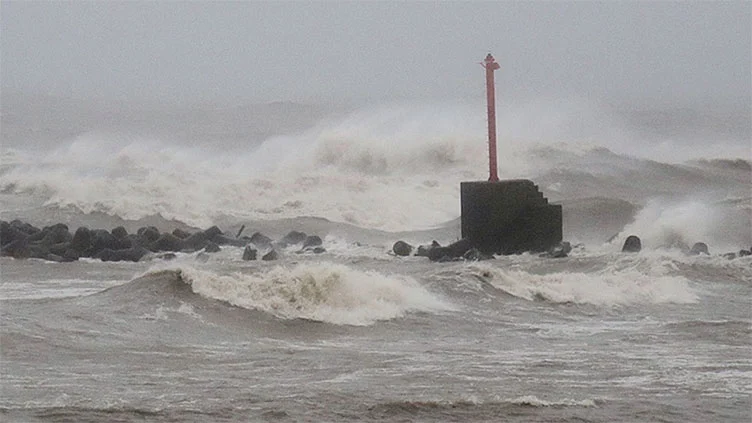MANILA, Sep 26(ABC): Super Typhoon Noru slammed into the Philippines, battering the heavily populated main island of Luzon with strong winds and heavy rain that have forced thousands of people to flee their homes.
The storm was packing maximum sustained winds of 195 kilometres (121 miles) an hour as it charged towards the archipelago nation after an unprecedented “explosive intensification”, the state weather forecaster said.
Noru, the strongest storm to hit the Philippines this year, made landfall in Burdeos municipality on the Polillo islands, part of Quezon province, at 5:30 pm (0930 GMT).
Videos posted on social media and verified by AFP showed trees swaying wildly as wind and rain whipped across the islands.
The weather bureau issued warnings late Sunday for “serious flooding” in vulnerable areas of the capital Manila and nearby provinces as Noru dumped heavy rain.
“We ask residents living in danger zones to adhere to calls for evacuation whenever necessary,” Philippine National Police chief General Rodolfo Azurin said.
The Philippines is regularly ravaged by storms, with scientists warning they are becoming more powerful as the world gets warmer because of climate change.
“The winds were fierce this morning,” said Ernesto Portillo, 30, who works as a cook in the coastal municipality of Infanta in Quezon.
“We re a bit worried… We secured our belongings and bought a few groceries so we have food just in case.”
Noru weakened to a typhoon as it swept across central Luzon. It is expected to enter the South China Sea on Monday and head towards Vietnam.
“Typhoons are like engines — you need a fuel and an exhaust to function,” said weather forecaster Robb Gile.
“In the case of Karding, it has a good fuel because it has plenty of warm waters along its track and then there is a good exhaust in the upper level of the atmosphere — so it s a good recipe for explosive intensification,” he added, using the local name for the storm.
The storm hit about 100 kilometres northeast of Manila. Emergency personnel braced for the possibility of strong winds and heavy rain battering the capital, home to more than 13 million people.
Forced evacuations were under way in some high-risk areas of the metropolis, including impoverished communities living in flimsy shacks along rivers.
Gloria Perez, 68, was part of a group sheltering in modular tents set up on a covered basketball court.
“I evacuated the house where I m living in because I m scared, the flood there gets really high,” Perez told AFP.
“I don t want a repeat of what happened to me before.”

